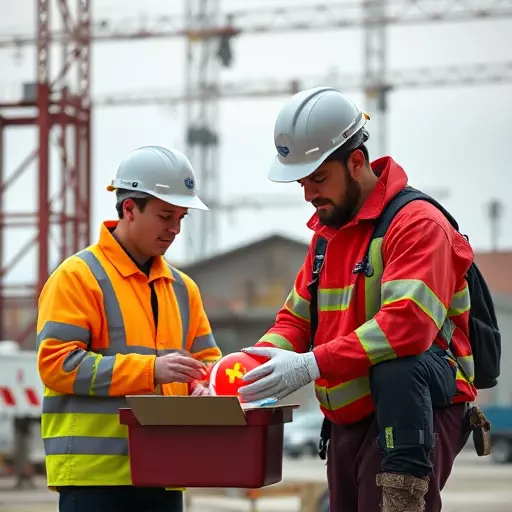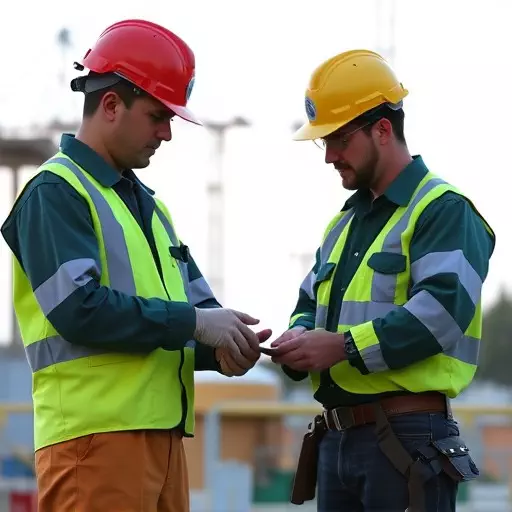Construction sites require specialized CPR training for construction workers due to their unique risks. The Occupational Safety and Health Administration (OSHA) mandates specific CPR certification criteria, emphasizing the importance of first aid basics for construction workers in workplace safety. Regular CPR refresher courses are recommended to keep workers proficient, aligning with OSHA's continuous education guidelines, ensuring sites are prepared to handle emergencies effectively.
In today’s work environment, especially in high-risk sectors like construction, being prepared for emergencies is paramount. Cardiopulmonary Resuscitation (CPR) is a critical skill that can save lives in the event of sudden cardiac arrest. This article delves into the essential first aid basics tailored for construction workers, focusing on OSHA requirements for CPR certification. We’ll explore practical tips and techniques to ensure your workplace is equipped with trained personnel ready to respond swiftly and effectively during emergencies.

Construction sites present unique challenges and risks, making it imperative for construction workers to receive comprehensive first aid training, including cardiopulmonary resuscitation (CPR). CPR training for construction workers is not just a skill but an essential tool in emergency situations that can significantly impact survival rates. The Occupational Safety and Health Administration (OSHA) outlines specific requirements for CPR certification, emphasizing its importance in ensuring workplace safety.
Beyond the legal mandates, understanding the first aid basics, such as how to perform CPR, is crucial for construction workers. These skills enable them to respond effectively during emergencies, potentially saving lives before professional medical help arrives. Regular CPR training updates and refreshers are recommended to ensure workers maintain proficiency, aligning with OSHA guidelines for ongoing worker safety education.
model 'aya-expanse' not found

In many industries, including construction, where workplace emergencies can arise unexpectedly, having a comprehensive understanding of basic first aid and cardiopulmonary resuscitation (CPR) is paramount. Construction workers often face unique risks on the job, such as heavy machinery, heights, and hazardous materials, which necessitate specific training to handle medical emergencies effectively. CPR training for construction workers equips them with crucial skills to respond to cardiac arrest situations, a common occurrence in industrial settings. This training goes beyond basic first aid, delving into scenario-specific techniques tailored to the challenges encountered on construction sites.
To meet OSHA requirements for CPR certification, construction companies must ensure their employees receive proper instruction and practice regular drills. The agency mandates that workers are trained in CPR and first aid, with recertifications every few years to maintain proficiency. This includes understanding how to use an AED (Automated External Defibrillator) effectively, a device that can analyse the heart’s rhythm and deliver an electric shock to restore a normal heartbeat. By adhering to these guidelines, construction sites can become safer environments, where quick actions can make a significant difference in saving lives.


